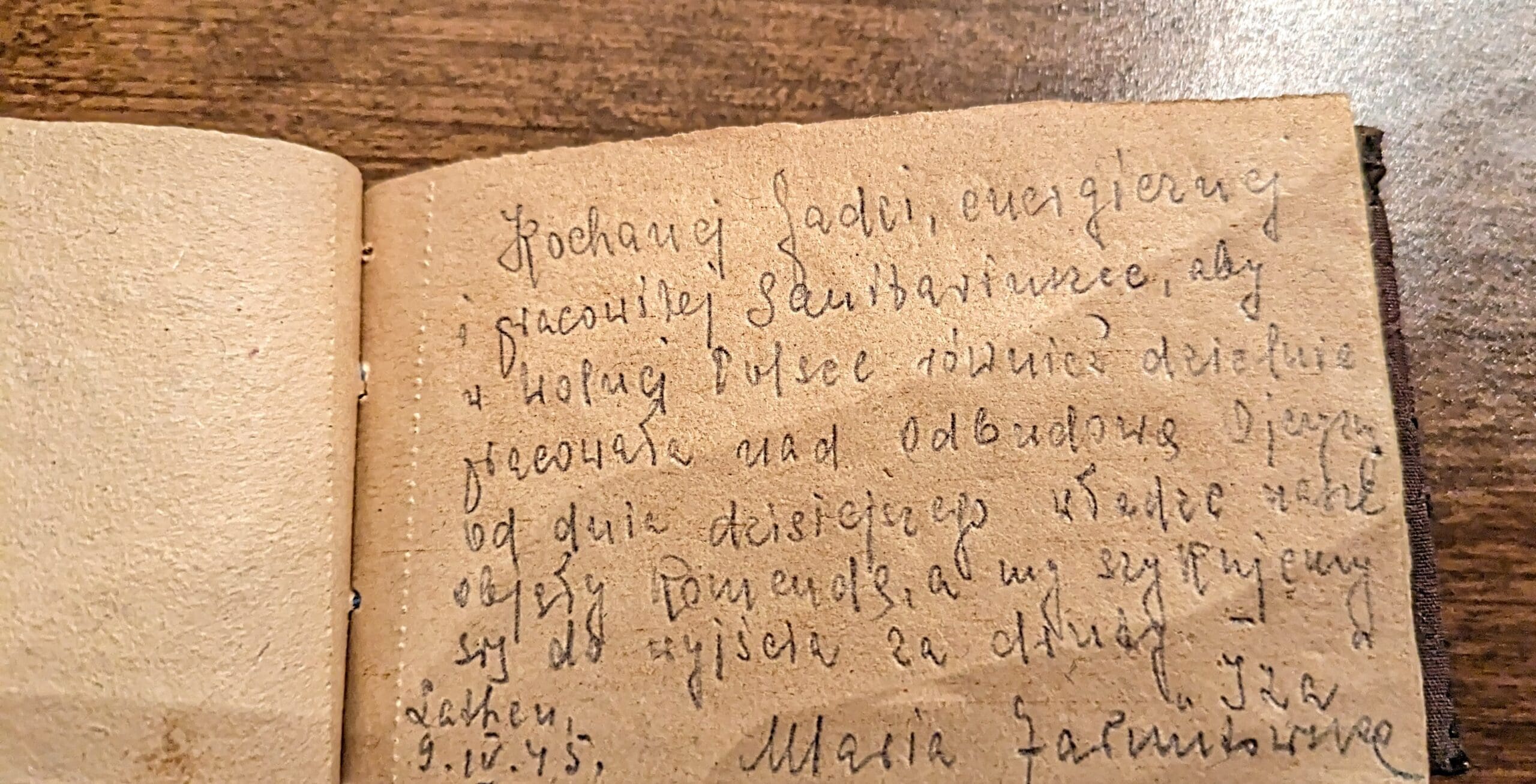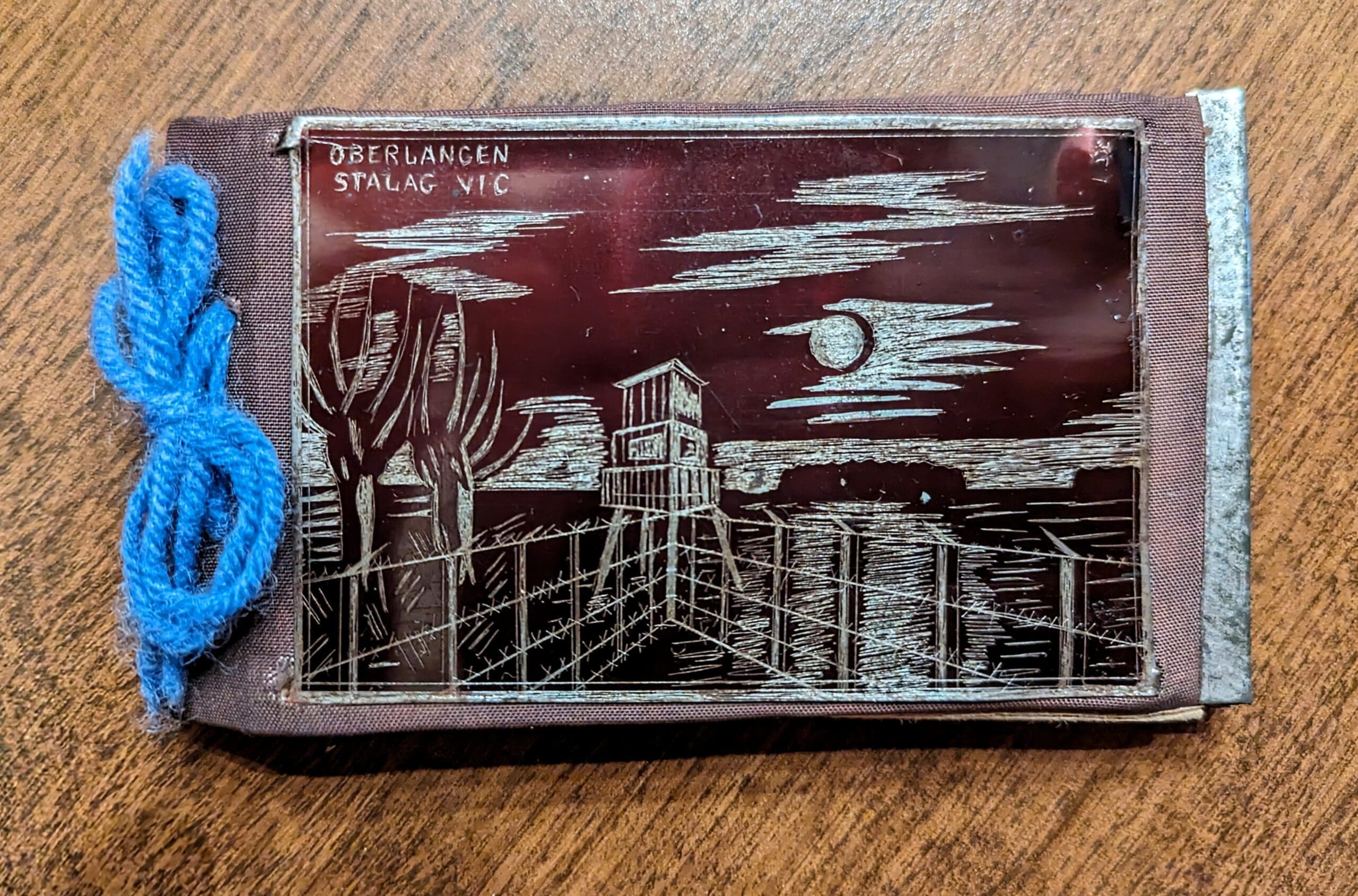
Mira Alexandria Newell (third from left), shown with the musicians who performed at the reception, was a speaker at an Aug. 1 event at the Basilica of St. Josaphat that commemorated the anniversary of the Warsaw Uprising during World War II. (Submitted photo)
Fr. Krzysztof Smigielski, O.F.M. Conv., told those assembled Aug. 1 at the Basilica of St. Josaphat that it’s not easy to forgive someone who commits murder.
He was speaking at a bilingual Mass sponsored by the Polish American Congress to honor and remember the saints and heroes who bravely fought against Nazi Germany during the Warsaw Uprising, which had begun 80 years to the day earlier, in 1944. The evening also included a panel and reception at the Basilica, which was built by Polish immigrants from 1896-1901.
“It seems impossible to forgive those who hurt us so much,” Fr. Smigielski said. “But yes, we can. All we need to do is to look at the image of Jesus Christ crucified. He prayed for those who crucified him. He said, ‘Forgive them for they know not what they have done.’ The Lord’s Prayer instructs us to forgive those who trespass against us. Reconciliation and peace teach us and breathe one’s desire for spiritual awareness. In Jesus, we all love without exception. A world without Christ and his merciful love has no future.”
The Warsaw Uprising was the largest organized resistance fight in occupied Europe during World War II.
Germany invaded Poland on Sept. 1, 1939, the date that marked the start of World War II. The occupation regime of the following five years was characterized by violence, resettlement and genocide.
Disgusted with the ruthless occupation, thousands of poorly armed insurgents fought in the cut-off city before being forced to surrender after 63 days of heroic resistance: 200,000 Poles were massacred and the city, the Polish capital once dubbed the Paris of the North, was turned into wreckage.
Fr. Smigielski explained that life completely changed in August 1944 and the resistance fight expected to last no longer than a week lasted 63 days, through Oct. 2, 1944.
Following the Mass, Mira Alexandria Newell spoke of her late grandmother, Jadwiga Przydryga, who was born in Warsaw. She enjoyed a happy, loving family and close friends, but her life was drastically altered Sept. 1, 1939, when the bombs began to fall, and Nazi Germany attacked Warsaw.
“At just 16, my grandmother joined the Polish underground resistance with her friends,” said Newell. “These girls defended the streets of Warsaw. They kept watch for the enemy, carried messages and cared for the wounded, with virtually no supplies. She left her safety, her belongings and all that was familiar, and is an example of how the ordinary do the extraordinary.”
While the young resistance fighters fought fiercely for months, they could not overpower the Nazi army, and the survivors, including Przydryga, just 17, were arrested and deported to camps as prisoners of war.
Freed on April 12, 1945, just before the war ended, Przydryga left for Italy and completed her education. She traveled to England, where she met and married her husband, and together, they immigrated to Wisconsin where they raised her daughter and created a life for themselves. She died on Mother’s Day.
A reception including refreshments and a series of questions and answers by a panel of experts took place near the visitor center. The event was moderated by Dr. Angela Pienkos, former teacher of European history at Ripon and Alverno colleges and past Executive Director of the Polish Center of Wisconsin.
“In 1961, when I was a grad student in Polish history in Poland, on one of the first visits I ever made, I met several individuals who lived through the uprising,” Pienkos said. “One of them was a teenager who was severely wounded in the uprising but lived a long and successful life; another one was a courageous young woman, a teen who served as a nurse in the uprising and who passed away last year at 99.”
Ewa Barczyk is the emerita director of the University of Wisconsin-Milwaukee Libraries and past vice president of Polanki, the Polish women’s cultural club of Milwaukee. She is currently the vice president of the Polish American Historical Association and the author of “Footprints of Polonia.”
“My late mother went to the front to volunteer to be a nurse in the Warsaw Uprising. Although she lived through five years of bombing, execution and seeing people hanging from light posts, she did not hesitate to volunteer and join the other soldiers who fought for 63 days,” Barczyk said. “She spent her time bandaging, trying to dig people out of collapsed buildings and saving soldiers with very little equipment, painkillers or bandages. They were in basements and often bombarded. She was all of 19 years old and witnessed the immense suffering of civilians.”
Eventually forced to surrender and taken by the Nazis as POWs, Barcyzk’s mother was shoved into a cattle car and shipped to a camp in Germany, where prisoners were forced to make armaments and if caught sabotaging, they would be shot in the head by a Nazi guard walking around.
“Finally, when the war ended, she and the other prisoners were rescued,” said Barczyk. “She went to Italy, then England, and immigrated to the United States and lived out the rest of her 93 years in Chicago. Despite all the bravery and what she and the others had done, the Warsaw Uprising was not a topic to be discussed openly. Thankfully, she was able to live long enough to see a free Poland and the uprising began to be discussed and commemorated as a crucial part of Polish history.”
Dr. Neal Pease is a professor emeritus in European history at the University of Wisconsin-Milwaukee, past chair of the UWM Polish studies committee, and past vice president of the Polish Institute of Arts and Sciences of America.
“The genesis of the uprising had to do with the wartime strategy of the home army, the underground resistance force that was lined with Polish government exiles, and they planned to hold off on major military actions to organize, to gather weapons and materials to wait for the proper moment to launch an uprising in conjunction of the arrival of a liberating army,” Pease said. “Unfortunately for the Poles, geography dictated that the liberating army was the Soviet Red Army, and we all know how that ended.”
The Soviet Army did not cross the Vistula Rover until January 1945, but by then the left side of Poland’s capital looked like an apocalyptic desert of rubble and ruins.
Dr. Donald Pienkos, professor emeritus of political science at UWM and founder of its Polish studies committee in 1979, formerly a National Director of the Polish American Congress and a past president of its Wisconsin state division, offered several observations on the uprising, which he said was a great gamble.
“It was based on several assumptions. One is that the 40,000 disciplined Pole Army freedom fighters were so young. They believed this army would liberate the capital from the hated Nazi German occupiers and in the name of the Polish government in London to which they were loyal and do it in a week,” he said. “This, even though only one out of any 10 of the fighters had any weapons. Secondly, they thought Poland’s great powerful ally, the United States led by President Roosevelt; Winston Churchill, Great Britain; and Soviet leader (Joseph) Stalin would actively support their cause. They assumed the demoralized Germans had already suffered colossal military losses in the Soviet Union and Normandy, and would be driven out of the city from this effort. Tragically, they gambled and lost, and failed to capture the key strategic points in the city.”
When the uprising ended 63 days later, nearly 20,000 Freedom Fighters and 200,000 civilians were killed. Nobody was brought to justice for the crimes committed during the Warsaw Uprising.





